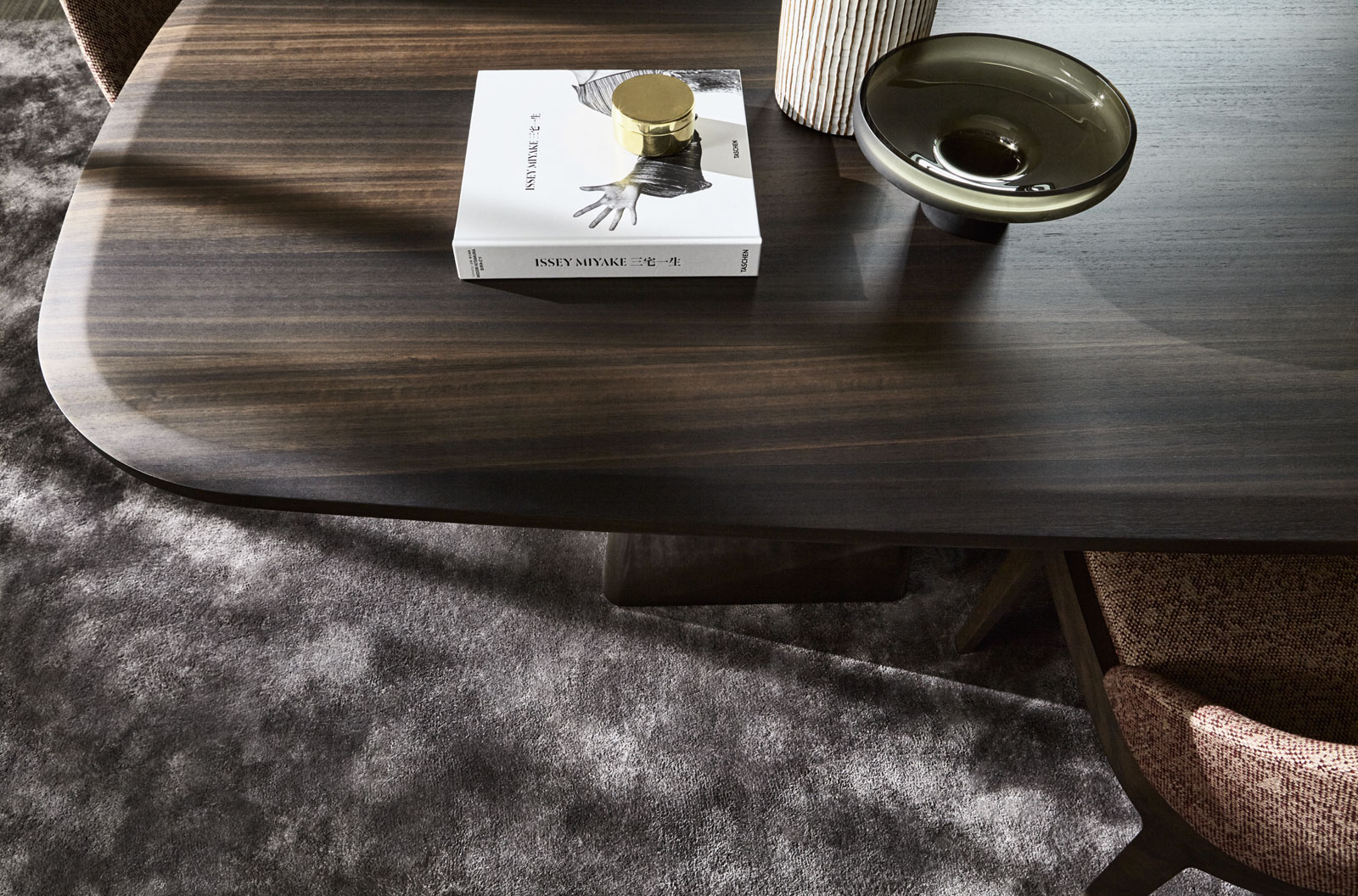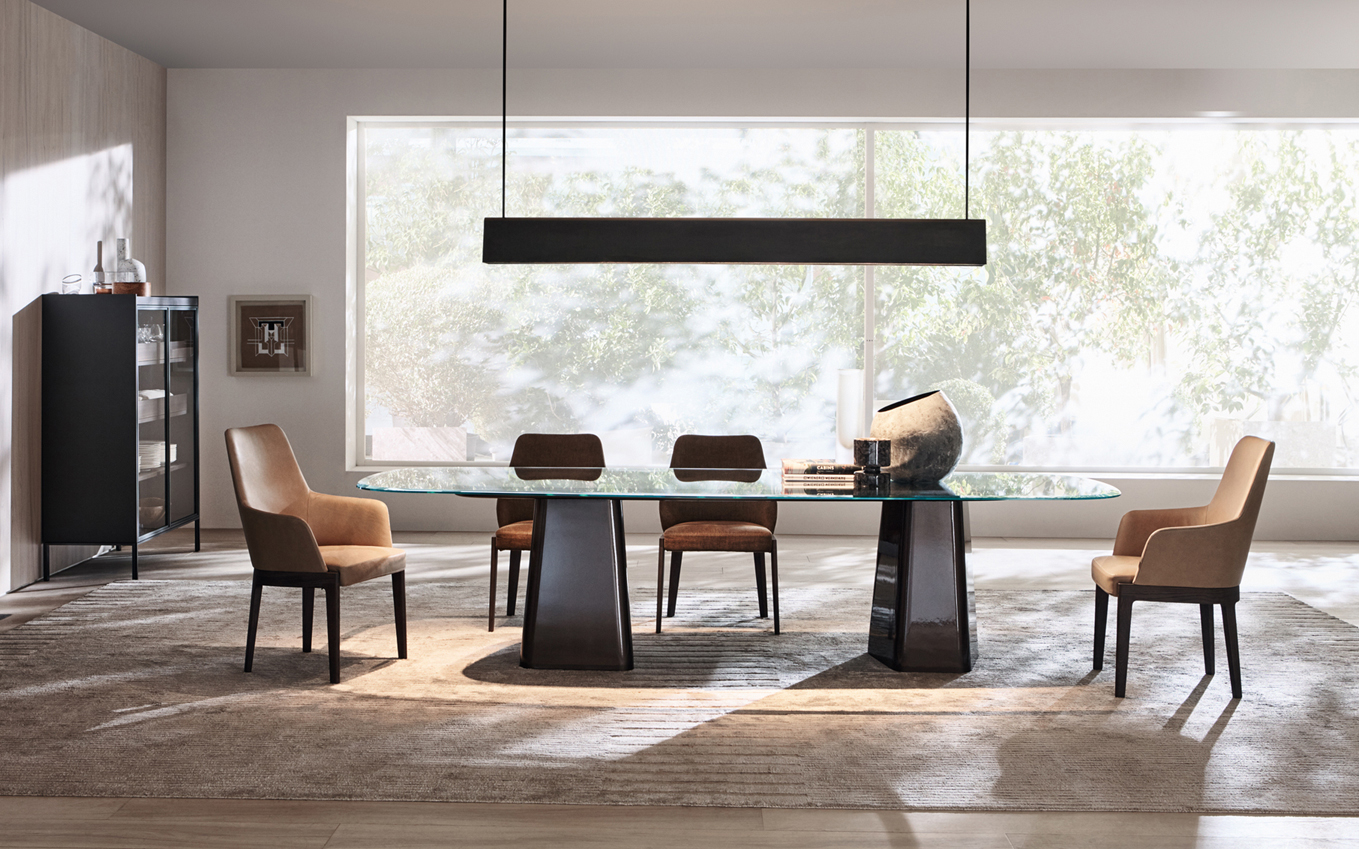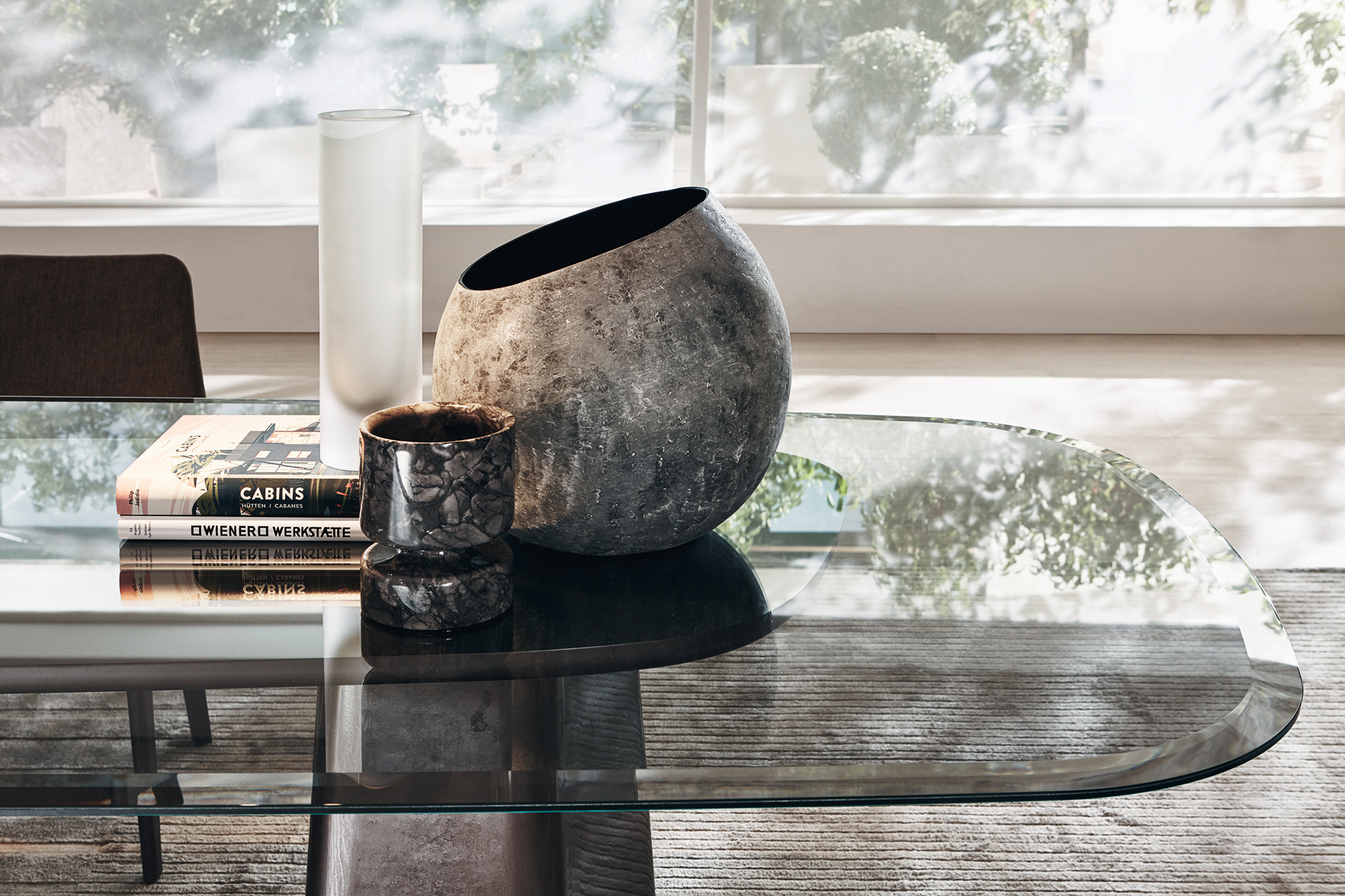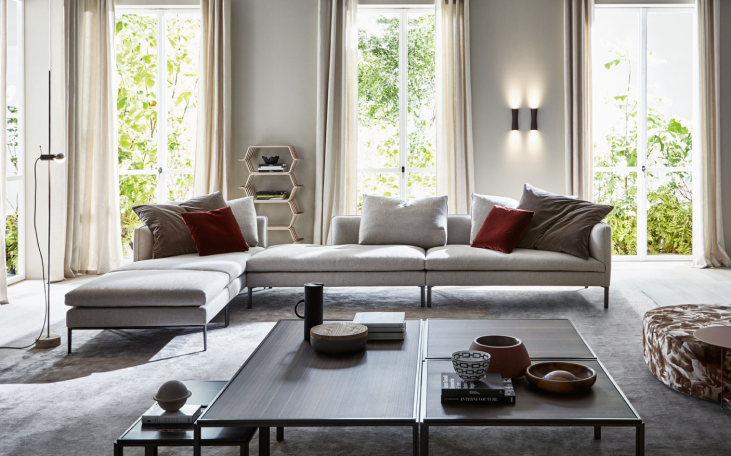GENERAL INFORMATION
Rodolfo Dordoni combines simple geometric forms to create new geometric solids and thus produce original furnishings in concept and function. This is the Mayfair collection as it is taking shape: dining tables, small tables and support bases. Molteni makes every effort, by running scrupulous checks on each item, to keep the original characteristics of the woods employed pristinely intact - homogeneity of surfaces, warmth and colour. It should be borne in mind, however, that when natural raw material is used, these characteristics cannot always be guaranteed for every part of the item. That’s why you may sometimes find veinings or chromatic shadings in various parts that are not perfectly homogeneous. These differences should not be considered a defect, but rather proof that the material used is the genuine article - real wood. All chipboard and MDF panels conform to EN 120 Class E1. All parts in wood (heartwood or veneer) are painted or varnished in an opaque, transparent, polyurethanic or acrylic finish. Used in the production of panels are borders in wood, polyestered and melaminic. Products used for varnishing or painting contain no formaldehyde, their composition being such that they are classified non-toxic. These products are free, moreover, of the heavy metals mentioned in European specification EN71, part 3, 1988.

USE AND MAINTENANCE
The product is destined for use indoors in homes as a place to set lightweight materials. Table tops, bases and small tables are not to consider worktops of any kind. Do not sit or stand on tables, bases or small tables. Do not load weight on the extremities that can cause damage or tipping. Distribute weight loads uniformly. Avoid performing maintenance on components of the product, and for any problems, contact the salesman. Avoid allowing water or other liquids remain in contact with surfaces, even for short periods of time. Edges cannot be placed near sources of heat exceeding 45° C. Any presence of particular odours from the product, when it is removed from the packaging, is not a source of hazard and will disappear as the product is exposed to air.
WARNING:
GIVEN THE WEIGHT OF THE TABLE, IT IS ADVISABLE TO ASSEMBLE IT ONLY AFTER HAVING DECIDED THE FINAL POSITION OF USE. TO MOVE THE TABLE, FIRST DISMANTLE THE TOP AND THEN REPOSITION THE LEGS WITH THE SPECIFIC TEMPLATE PROVIDED DURING ASSEMBLY. TO MOVE THE BASE WITH GLASS, FIRST LIFT THE GLASS AND THEN REPOSITION IT AFTER HAVING MOVED THE BASE.

MAINTENANCE OF WOOD, LACQUERED, PAINTED, COPPER AND GLASS PARTS
For everyday maintenance dust with a soft dry cloth. For greasy, oily marks (fingerprints) we advise cleaning the surface with alcohol diluted in water, drying immediately with a soft cloth. Products containing acetone, bleach and solvents should be avoided, as should abrasive products, furniture wax and hard fibre cloths (linen and synthetics) which could ruin and/or scratch surfaces. All these operations should be carried out with great care, avoiding heavy pressure. Exposure to direct sunlight can alter the wood or paint colour. For gloss finishes, continued maintenance in time may cause scratching and a reduction in the shiny effect. For glass, specific products readily available on the market can be used.

MAINTENANCE OF MARBLE
As regards normal maintenance, dust and dry residues, use a soft cloth. For stubborn dry dirt (dust which has penetrated into the porosity) it is advisable to use a close-knitted or a spongy cloth, slightly dampened with warm water and well wrung out. Clean by following the vein of the surface without applying too much pressure. As for both greasy and oily marks (fingerprints) it is recommended to treat the surfaces with a small sponge dampened with water and washing-up liquid. Afterwards go over the surfaces once again as described above. Products which contain solvents and/or methylated spirits as well as cloths with rigid fibres (linen and synthetic fibres) are to be avoided as these may ruin the varnish. Given the kind of treatment it is important to immediately remove stains following the above described procedures.
DISPOSAL
Once discarded, neither the product nor its components should be dispersed in the environment, but rather consigned to public disposal systems.


0%